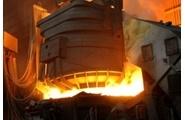Steel Products Prices North America

Questions Regarding Capacity Utilization Rates
Written by John Packard
May 18, 2016
Steel Market Update received the following question from one of our readers yesterday (Wednesday, May 18th) regarding the weekly capacity utilization rates that are produced by the American Iron & Steel Institute (AISI) and are published in our Tuesday evening newsletter.
“This morning I was reading the latest SMU report and I was left wondering of the apparent contradiction between the longer lead times, market price increases, versus the low mill utilization rate. One would logically expect that a 73 percent mill utilization should result in short lead times and a subdued market price. This is not what we are seeing in the NA market. One could make a reasonable point that the steel mills artificially extending the lead times to support higher market prices.”
We have heard this question from a number of people within the steel industry. The AISI number can be quite deceiving to someone who does not actively watch this data and is not aware of what is involved in producing the weekly production and capacity utilization number.
![]() When reviewing the AISI weekly data you need to be aware that they are collecting information from both long products (rebar, beams, SBQ, wire rod, etc.) as well as the flat rolled or sheet mills. Total capacity for the 2nd Quarter 2016 is approximately 30.4 million tons vs. 30.7 million tons during the same period last year. This puts the annual capacity number (all products) at 121.6 million tons according to AISI.
When reviewing the AISI weekly data you need to be aware that they are collecting information from both long products (rebar, beams, SBQ, wire rod, etc.) as well as the flat rolled or sheet mills. Total capacity for the 2nd Quarter 2016 is approximately 30.4 million tons vs. 30.7 million tons during the same period last year. This puts the annual capacity number (all products) at 121.6 million tons according to AISI.
As you can see by that number, it does not appear any adjustment has been made to account for capacity that has been taken off line at any point in time. Right now we have at least four blast furnaces down due to the weakness in the energy markets and the flood of inventories on the service center floors going into 4th Quarter 2015. The AK Steel and US Steel Granite City blast furnaces are all considered as “able to run” and therefore as such they are in the AISI available capacity numbers. SMU is actually a little confused as to why the 2Q 2016 number is almost the same as 2Q 2015 as we believe USS had their Fairfield furnace running last year and it was not taken out until late 3rd/early 4th Quarter 2015. Since the furnace has been permanently shut down that tonnage should have been reduced from the AISI number.
The next issue we have with the weekly number is it comes from at best 50 percent of the producing steel mills providing production information. So, the number provided is actually a best guess scenario based on whatever model the AISI is using.
The reality of the situation is that the sheet mills, the flat rolled mills, are running close to full capacity. During their earnings conference calls with analysts were heard utilization rates from 82 percent to 88 percent capacity (the highest being Steel Dynamics). Long product mills are probably producing in the low 60 percentage range.
SMU Note: The AISI also produces a monthly raw steel production and capacity utilization rate number. This is based on close to 75 percent of the mills providing data. When compared against the weekly numbers they do not add up. We consider the monthly number to be more accurate since it comes from a deeper pool of information.

John Packard
Read more from John PackardLatest in Steel Products Prices North America

SMU Price Ranges: Sheet and plate steady ahead of Independence Day
Sheet and plate prices were little changed in the shortened week ahead of Independence Day, according to SMU’s latest check of the market.

Nucor maintains plate prices, opens August order book
Nucor aims to keep plate prices flat again with the opening of its August order book.

Nucor CSP remains level at $900/ton
Nucor maintained its weekly list price for hot-rolled (HR) coil this week, following two consecutive increases.

Cliffs raises prices, seeks $950/ton for July spot HR
Cleveland-Cliffs plans to increase prices for hot-rolled (HR) coil to $950 per short ton (st) with the opening of its July spot order book. The Cleveland-based steelmaker said the price hike was effective immediately in a letter to customers dated Monday.

HRC vs. prime scrap spread widens in June
The price spread between HRC and prime scrap widened in June.
